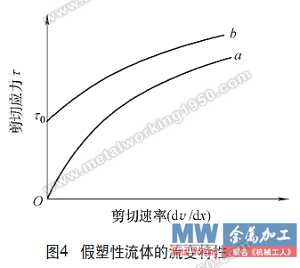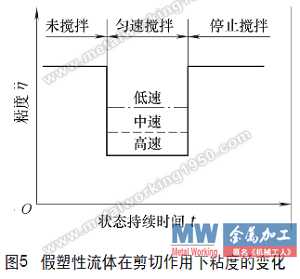Second, control the rheological properties of the coating
In order for the coating to have a high solids content and a shallow depth of penetration into the sand mold, the current coatings are all high viscosity colloidal dispersions. Due to the high viscosity of the coating, the problem of how to apply it is raised.
The study of the rheological properties of colloidal dispersions provides a way to solve this problem. Under certain conditions, the colloidal dispersion can be shear-diluted, that is, the viscosity of the dispersion can be greatly reduced under shear.
That is to say, although the initial viscosity of the coating is very high, if it has the characteristics of shear thinning, it can be sheared under the action of stirring or application (brushing, spraying, wiping, etc.) The viscosity can be made very low and easy to apply. After the application, the shearing action is stopped and the viscosity is restored.
“Rheology†is a discipline, and even if the scope is reduced to “rheological properties of paintâ€, the author has no ability to make a more comprehensive review. What I want to talk about here is only a small part related to shear thinning, and it can only be general and indicative, not strictly discussed.
1. Newtonian fluid
When there is relative slip between two adjacent layers of fluid, shear stress is generated between the layers to resist this relative slip. The ratio of the shear stress of a fluid to the relative slip rate (shear rate) is called the kinematic viscosity, which is what we usually call.
The ordinary fluid obeys Newton's internal friction law, that is, the ratio of shear stress to shear rate tanα is constant (ie, viscosity η of the fluid) under constant temperature conditions, as shown in Fig. 3. This fluid is commonly referred to as Newtonian fluid, and as long as the temperature is constant, the viscosity is constant regardless of the shear rate and the length of the shear time.

Fluids that do not obey the law of internal friction are commonly referred to as non-Newtonian fluids. The situation of non-Newtonian fluids is quite complex, and the temperature is constant (the following discussion presupposes this): the viscosity is independent of the shear duration and can be called "non-time dependent non-Newtonian fluid"; There is also a change in viscosity as the duration of shear increases, which may be referred to as "time dependent non-Newtonian fluid."
2. Pseudoplastic fluid and alcohol based coating
Pseudoplastic fluids are non-time dependent non-Newtonian fluids with shear thinning properties, and their rheological properties can be described by shear stress-shear rate plots, see Figure 4. Only the case of no yield value will be explained below.

When the force is applied, the fluid begins to flow. The rheological curve is a curve that curves downward through the origin. The shear rate increases and the shear stress increases, but the increase is less than the increment of Newtonian fluid. As the shear rate increases, the angle between the tangent to the corresponding point on the rheological curve decreases with the horizontal axis, and the viscosity of the fluid decreases. This is the so-called "shear dilution" characteristic. Therefore, pseudoplastic fluid has the following two characteristics:
(1) Once stirred, the viscosity is lowered. At constant agitation, the viscosity is constant and does not change due to prolonged mixing time. Stirring is stopped and the viscosity is immediately restored.
(2) The stronger the agitation of the fluid (ie, the higher the shear rate), the greater the decrease in viscosity.
In summary, the characteristics of the viscosity of the pseudoplastic fluid changing with shear conditions can be illustrated in Figure 5.

Some pseudoplastic fluids have a certain yield value, as shown by curve b in Figure 4. In this case, the curve does not pass through the origin, and the fluid begins to flow only after the shear stress reaches a certain value Ï„0. However, when the fluid is sheared, the characteristics of the viscosity change are the same.
A colloidal dispersion of particles that is not charged, and which has shear thinning properties, can only be made into a pseudoplastic fluid. I have done many experiments on alcohol-based coatings made in the United States, Japan and Belgium, as well as alcohol-based coatings developed by myself. Most of them, except for individual varieties, have pseudoplastic characteristics.
The polarity of the alcohol is small, and the alcohol-based coating is difficult to charge the particles, and thus most of them have the characteristics of a pseudoplastic fluid. The advantage is that although the solid content of the coating is high and the initial viscosity is large, the viscosity is greatly reduced under the action of external force during the application process, which is convenient for application.
Disadvantages of alcohol-based coatings: When the coating is stopped, the viscosity of the coating is immediately restored, so brush marks and flow marks after application are difficult to avoid.
Previous Next
Pick-up Tools,Magnetic Trays,Inspection Mirrors
Magtoon Magnetic Products Co., Ltd. , http://www.dg-magnets.com